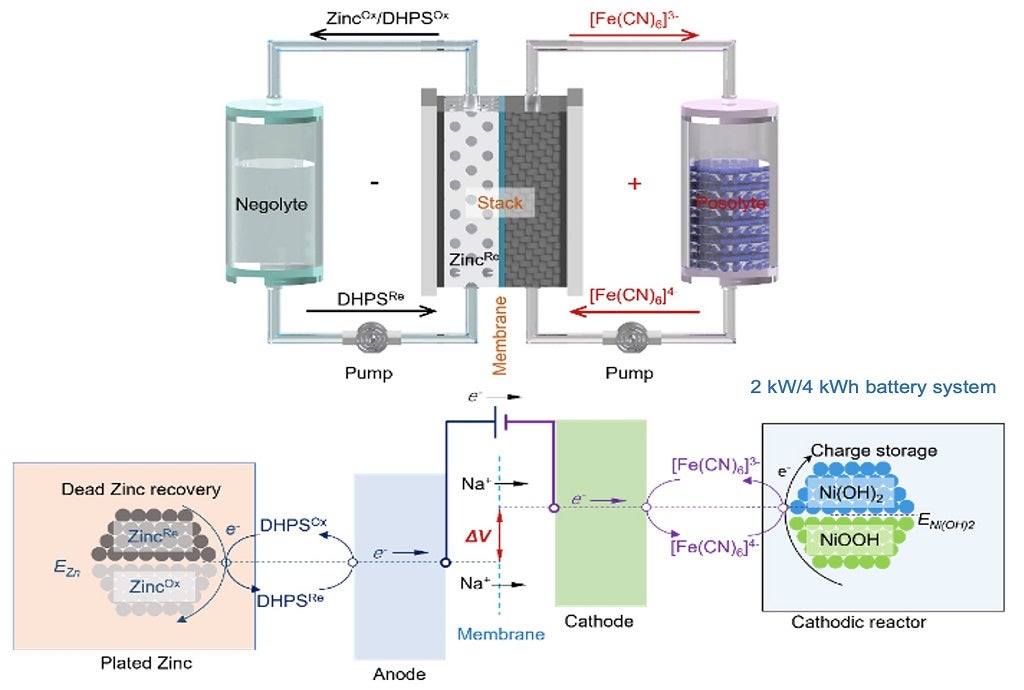ADT-RP3: Redox-mediated Flow Battery for Household Energy Storage
Principal Investigator: Professor Wang Qing, MSE
The ever-increasing energy demand and environmental concerns call for innovative energy technologies which effectively exploit various energy sources, particularly those of sustainable solar and wind energy, etc. However, despite their abundancy, the intermittency of these renewable energy sources necessitates advancements in energy storage. A wide variety of electrochemical systems have been employed to achieve energy storage. Redox flow batteries (RFBs) possess unique features making them suitable for grid-scale energy storage and conversion. In RFBs, redox electrolyte solutions stored in external reservoirs are pumped through the cells to realize the conversion of chemical and electrical energies on electrodes, which are separated by ion-exchange membrane (IEM), as shown in Figure 1. As such, the capacity and power of the system are decoupled. The capacity depends on the size of the electrolyte tank, while the power depends on the dimension of the electrodes. This project concerns the development of an innovative redox-flow battery technology based on the redox-targeting concept advanced by the PI and the team. The proposed studies involve (1) battery chemistry and materials development: low-cost and robust redox-active materials made of earth-abundant elements and processing of ion-exchange membrane; (2) system development: prototyping, demonstration, and full evaluations of an integrated 2 kW Zn-Fe battery system (with a technology readiness level of 5-6) for household and other distributed energy storage applications.



